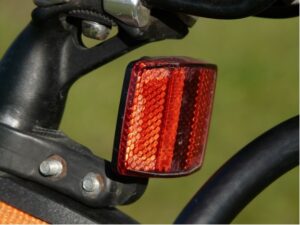Bluetooth vs RFID
Are you frustrated with the limitations of RFID technology? Perhaps RFID readers are too expensive, or the tags don’t perform well with your products. If you’re in search of a more cost-effective and versatile alternative, active Bluetooth could be the solution you’ve been looking for. In this article, we’ll explore the key differences between active Bluetooth and passive RFID, shedding light on why many are making the switch. Imagine it as the difference between a lighthouse and a bike reflector, each serving a unique purpose in the world of wireless communication.
Power
The primary difference between active Bluetooth and passive RFID is that an active Bluetooth tag has a battery. Think of it as the difference between a lighthouse and a reflector on a bike. A lighthouse is emitting light to warn boaters of danger. A reflector on a bike only lights when light hits it. Same applies to RFID. RFID can only “light up” when energy is directed at it.


Traditional active Bluetooth devices are powered by lithium coin cell and are packaged in a plastic housing. Conversely, the Reelables Bluetooth device is powered by a non-DG zinc-manganese battery and comes in the form factor of a flexible label supplied in reels.
Readers
Because there is a battery powering the strength of the Bluetooth beacon, much cheaper readers can be used to detect that items entered and exited a reader zone. Stationary Bluetooth readers are positioned like Wi-Fi access points with a line of sight detection of around 300 meters. In a busy, crowded facility, detection ranges down to 40 meters. In contrast, RFID readers rely on a closer proximity to detect RFID tags with a range of 1 to 18 meters.
Unlike RFID, mobile cellular Bluetooth readers can be used to detect and track Bluetooth devices while in transit. Additionally, due to price and ease of installation, stationary Bluetooth readers can be installed in 3rd party facilities to give you remote automated inventory visibility without requiring any additional operational requirements.
Battery Power + Cheaper Readers
The result of a battery powered smart device combined with cheaper readers results in significant improvements of accurately reading your products. Whether it is tightly packed facility with a wide range of materials and products, a large hanger with racks of products, or a small to medium work or storage room, tracking by Bluetooth outperforms RFID every time. To help you navigate and select the best device for your use case, here is a comparison matrix that summarizes the differences and proposes use cases for the two types of devices.
Comparison Matrix
- Passive RFID
- Our Plan
| Passive RFID | Our Plan | |
$3999 /year | ||
| Power | None | Battery |
| Distance between reader and device | 1 - 18 meters | 40 - 200 meters |
| Reader options | Stationary or hand held | Stationary, mobile, smartphone |
| Use cases | Location inventory, automated point of sale, library book check-out, cycle counts, magic mirror, ... | Asset tracking, cross facility inventory tracking, on-shelf inventory, consigned inventory, split detection, ... |
| Reader pricing | $$$$$ | $$$ |
| Tag pricing | $ | $$ |
Contact us to learn more about why Bluetooth tracking is the best option for real-time visibility.

